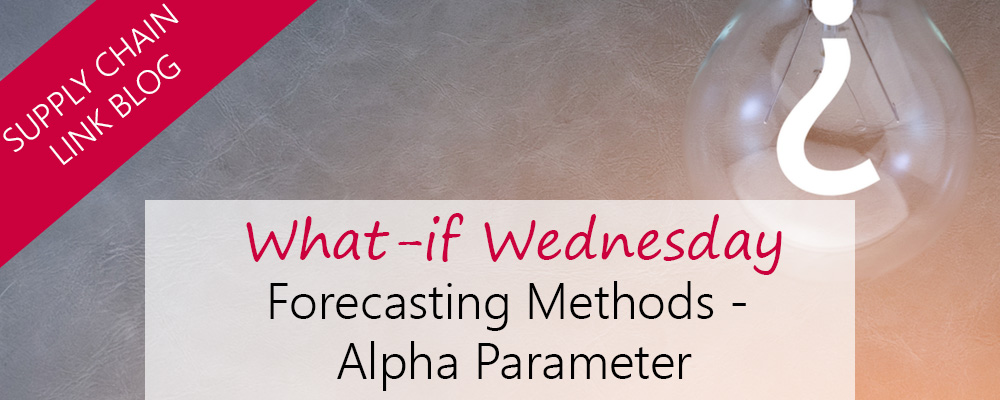
What if scenario forecast simulation: what is the effect of changing the alpha parameter in Holt-Winters method?
From time to time, clients ask me about the effect of changing a parameter of a forecasting method. Recently, I got the idea of creating a series of blog posts where I would simulate the results of tweaking these parameters.
The first parameter I decided to experiment with is the alpha parameter in Holt-Winters method. (If you are interested in a very detailed description of this method, just Google it.)
In the Holt-Winters method, parameters Alpha, Beta, and Gamma determine the relative weighting of recent and more distant history in fitting intercept, trend, and seasonal correction terms. All three parameters are between 0 and 1, with larger values giving more weight to recent history.
- Alpha affects the estimate of the intercept
- Beta affects the trend
- Gamma affects the seasonal correction terms.
Read Also: Using What-if Scenarios To Create A Dynamic S&OP Paradigm
Let us focus on Alpha in this blog post. The higher the value of alpha the more weight is applied to the recent actual data points. The first chart below (figure 1) shows historically observed values from the last three years, and the following graphs represent forecasts using an Alpha value of 0.05, 0.1, 0.2, 0.4 and 0.8.

Figure 1

Figure 2

Figure 3

Figure 4
Related: Is Your Forecast Biased Much?

Figure 5

Related: How Many What-If Scenarios Should be a Part of the Monthly S&OP Process?
We observe that as we increase the value of Alpha the forecast changes. For example, see table below (figure 7) for changes in the forecast of Feb 2017. As Alpha goes up from 0.05 to 0.4, the forecast for Feb 2017 increases. This is because the most recent months (Aug-16 – Nov-16) have a relatively higher value than previous months. This drives the whole forecast to be somewhat higher as alpha increases as higher alpha means more weight on these higher values. However, when the alpha becomes too high (0.8) we see that the forecast decreases a bit. This is because almost all (80%) the weightage is on Nov-16 which is lower than the previous months. So too high of an alpha also may not be good in smoothing the forecast unless the business is very sensitive to the most recent history.

Figure 7
If there is a business case where more weight needs to be put on a near-term data point, one can experiment with higher values of alpha. For example, if there has been a significant up (or down) turn in the last 3-4-5 months and one wants to influence the forecast heavily towards that turn. In most common cases, however, an alpha value between 0.05 and 0.1 is recommended.
In our next post, continue with this discussion and change Beta. Stay tuned.
Want to join in our What-if-Wednesday posts? Add a comment below or send a tweet to @Arkieva with #WhatifWednesday, or email editor@arkieva.com to suggest a topic, scenario or simulation that you would like us to discuss.





